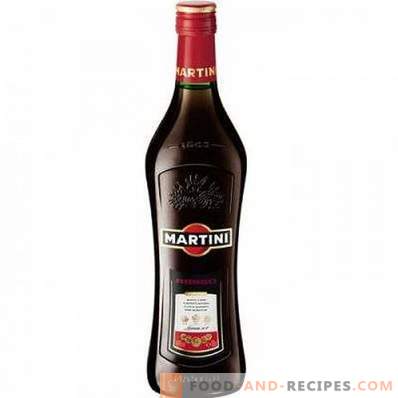
Port wine is a fortified grape wine produced in Portugal from berries grown in the Douro Valley. Its name translates as “port wine”. This is due to the history of origin of the drink. It appeared in the second half of the XVII century thanks to the trade war between France and England. When the importation of French wines into England was prohibited, they began to be bought in Portugal, but as a result of long-term transportation, they deteriorated. The problem was solved by adding brandy to the wine, which stopped the fermentation process. As a result, a grape wine with a strength of 18-23 degrees appeared, which connoisseurs lovingly call the port. The modern technology of its production provides for a long aging in oak barrels, as a result of which the drink acquires a noble taste and belongs to elite alcohol. “Numbered” Soviet port wine is made on a slightly different technology from the original and based on local raw materials, so, strictly speaking, it is not entitled to bear this name. But if you had a bottle of genuine Portuguese “port wine” in your hands, you will need information on how to drink port wine correctly in order to appreciate its unique bouquet.
Varieties of port
Depending on the grape variety used in the production, the amount of sugar, the aging period, the port wine may have completely different color, taste, aroma. The following types of port wine are best known:
- tony - this port wine is made from red grapes, but due to long aging it takes on a golden brown hue;
- ruby is a young fortified wine made from red grapes, it has a ruby shade, in its bouquet fruit notes are clearly distinguished;
- koleita - an elite type of red port with an exposure of more than 12 years;
- Branco is a white port wine, subdivided into dry, semi-sweet and sweet, has a pleasant fruity notes;
- Lagrima - sweet blended port wine;
- crusted - this species is distinguished by the obligatory presence of a significant sediment (there is sediment in any quality port, but in different quantities);
- Vintage - the most expensive type of port wine, made from red grapes only in those years when it turned out to be the most successful, has a unique bouquet of berries, fruits and dark chocolate.
There are some other varieties of porto, a little less known.
Several companies are engaged in the production of port wine, so you can find different names of companies on the labels - this is not surprising.
Terms of Use
Most often, port wine is served as a digestif or aperitif. This is due to the fact that the fortified wine basically has a sweet taste. However, it is permissible to serve porto as an accompaniment drink or to tasting it without reference to food intake. Otherwise, the use of port wine is governed by several simple rules.
- Before tasting, the port should be allowed to settle, so that the sediment will sink to the bottom of the bottle. Store the wine in a horizontal position so that the cork remains moist. 2-4 days before the planned opening, the bottle must be turned over, setting it vertically.
- It is not customary to re-seal the open port bottle.
- Before serving, port wine must be poured into a carafe, trying to keep the sediment at the bottom of the bottle. The carafe should be transparent. Well, if it closes.
- Before serving, port should be cooled to a certain temperature. A bouquet of red port wine is best revealed at a temperature of 18 degrees. White cool slightly stronger - up to 10-12 degrees.
- They drink porto from the glasses on the stem, shaped like tulips. The optimal capacity is 160 ml, but it should not be filled to the brim. Glasses fill no more than half, and sometimes even just a third.
- Drink Porto in small sips, enjoying his bouquet.
It is customary to use port wine in its pure form, but it is considered permissible to dilute it with clean water, mineral water without gas, and ice. Less commonly, the drink is diluted with tonic or used to make cocktails.
What to eat port wine
An appetizer to the port is chosen depending on which drink it is used as.
- If port wine is served as an aperitif, you can offer nuts, soft or semi-hard cheese.
- When using the “port wine” as a digestif, fruit or chocolate is offered to it. Other desserts are not forbidden.
- If you served a port for lunch or dinner as an accompaniment, then snacks for it are chosen based on the type of this wine. Meat dishes and liver pate are suitable for red port wine. For white fortified wine is better to submit fish and seafood.
Vegetable appetizers are not suitable for port wine.
Port wine can be added to tea or coffee, use it to make cocktails.
Cocktail “Porto Lime”
Composition:
- light port wine - 40 ml;
- lime or lemon juice - 20 ml;
- lemon or lime - 1 slice;
- ice cubes - 50 g.
Preparation Method:
- Juice and port mix in a shaker or a separate container.
- Put ice cubes in a glass.
- Pour the prepared mixture.
It remains to decorate the glass with a slice of lime and serve it to the table. As an additional decor sometimes use a sprig of mint.
Cocktail “Portonique”
Composition:
- light port wine - 50 ml;
- tonic - 50 ml;
- ice cubes - to taste.
Preparation Method:
- Fill the glass with ice cubes.
- Pour in port wine.
- Then pour in the tonic.
- Stir gently with a bar spoon.
This drink is preferably served with a straw. It has a refreshing taste, it invigorates well.
Cocktail “Assertive”
Composition:
- red port wine - 40 ml;
- vodka - 40 ml;
- Coca-Cola - 80 ml;
- ice - to taste.
Preparation Method:
- Pour alcoholic beverages into a shaker glass, shake.
- Put ice cubes in a wide glass, pour in an alcoholic mixture.
- Add cola, mix.
This version of the cocktail with port wine will appeal to men.
Quality port wine will not leave indifferent lovers of good alcohol. However, if you drink this drink incorrectly, it’s unlikely to enjoy its bouquet. Port wine can be tasted in its pure form or used to prepare invigorating alcoholic cocktails.























